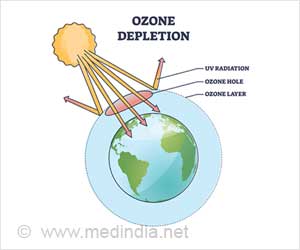Due to respiratory problems as a result of projected climate change, more children will end up hospitalised over the next decade, says a new study.
A new study has predicted an increase in future hospitalizations of children with respiratory difficulties. The forecasted spurt can be attrbuted to the projected climate change that environmental researchers are expecting.
The study by Mount Sinai School of Medicine was presented on Sunday, May 3, 2009 at the Pediatric Academic Societies Annual Meeting in Baltimore, Maryland.The lead author of this research is Perry Elizabeth Sheffield, MD, Pediatric Environmental Health Fellow in the Department of Community and Preventive Medicine and the Department of Pediatrics at Mount Sinai School of Medicine.
The research, in which Mount Sinai worked with Natural Resources Defense Council and the Columbia University Mailman School of Public Health, found a direct connection between air pollution and the health of children.
Ozone has many known negative respiratory health effects to which children are particularly vulnerable. An important projected consequence of climate change is the increase in ground-level ozone.
For the study, Dr. Sheffield and her colleagues created a model describing future projected rates of respiratory hospitalizations for children less than two years of age using baseline NYC metropolitan area hospitalization rates from publicly available corresponding state Department of Health databases. These hospitalization rates were then compared to a previously developed dose-response relationship between ozone levels and pediatric respiratory hospitalizations, and the expected New York City eight-hour daily maximum ozone levels for the 2020s, as projected by a regional climate model created by the NY Climate and Health Project, supported by a grant from the US Environmental Protection Agency.
Two separate future scenarios were used. The two scenarios differed by the amount of projected ozone precursor emissions (chemicals that are converted to ozone by light and heat).
Advertisement
Source-ANI
TAN










